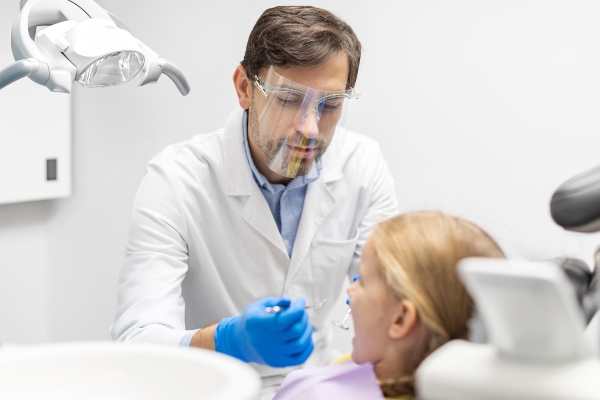 An emergency pediatric dentist is dedicated to providing quick, comprehensive care to help restore your child's oral health. This, in turn, provides parents peace of mind when unforeseen circumstances occur. Take a look at a few reasons we may work your child up the appointment list.
An emergency pediatric dentist is dedicated to providing quick, comprehensive care to help restore your child's oral health. This, in turn, provides parents peace of mind when unforeseen circumstances occur. Take a look at a few reasons we may work your child up the appointment list.
Bleeding gums
Bleeding gums are usually a sign of gum disease, a serious infection that ravishes the soft tissue structures surrounding the teeth. If left unaddressed, the disease can result in the child's gums receding or pulling away from the teeth, causing them to become loose and fall out prematurely. From here, their still-developing jawbones can begin to deteriorate, causing facial deformities and preventing permanent teeth from erupting properly or tooth replacements from being stable.
Parents can prevent the disease from worsening by taking their child to an emergency pediatric dentist. The dentist may perform root scaling and planing, which removes tartar or hardened plaque from above and below the gum line. They will then prescribe antibiotics to rid the mouth of the remaining infection.
It is important to note that experiencing bleeding gums does not automatically mean gum disease is present, especially if bleeding occurs once or twice. Sometimes, the child's gums and teeth can be sensitive, causing bleeding. This may result from using too-hard bristles on a toothbrush. Patients can try changing their toothbrush style, but if bleeding persists, especially if it has been a while since the child's last appointment, contact an emergency pediatric dentist.
Changes in appearance
Teeth that change in appearance over time may require the care of an emergency pediatric dentist. This is primarily the case with dental intrusion. An intrusion occurs when a tooth makes its way up into the jawbone, further than where it is supposed to be. This condition will be noticeable to the naked eye and cause the child pain, as the tooth will force its way through the socket and into other structures, such as the ligaments.
Trauma or impact
Children have a knack for finding themselves in sticky situations, so knocked-out and broken teeth are common. If a tooth has been knocked out, some people will save it in a glass of milk and contact the emergency pediatric dentist immediately. Do not wash the tooth off, even if there is gum tissue on it, as they may still be able to save it.
While a knocked-out tooth is more noticeable, broken teeth may not be. There are five types of tooth fractures:
- Craze lines
- Cracked teeth
- Fractured cusps
- Vertical root fractures
- Split teeth
Some fractures are noticeable, while others may only be noticeable with an X-ray. It is important not to let a tooth remain broken because it can compromise the pulp chamber, which houses the connective tissue, and results in more extensive treatment.
Pain or discomfort.
A child complaining of pain or discomfort intermittently or chronically is a sign of a deeper issue. More often than not, it is the side effect of decay or a fracture. Allowing decay to spread can result in broken or the loss of a tooth, gum disease, and pain; not to mention more extensive procedures the child will undergo, regardless of whether it is a baby or adult tooth that is the problem. Therefore, when they first begin complaining of pain, contact an emergency dentist.
Receive quick treatment for your child in the Middletown area
Prompt intervention and extensive procedures can be the deciding factor in your child's development. If your child has been in an accident or is complaining of pain or discomfort, contact our emergency pediatric dentist today.
Request an appointment or call Hudson Valley Pediatric Dentistry at 845-363-4177 for an appointment in our Middletown office.
Recent Posts
Seeing an emergency pediatric dentist is always a stressful experience for any parent and child. Even so, it is still important to know when to do so. Many situations may cause dental issues. Finding out if your child has a dental emergency can motivate you to act quickly. Here are the details on when you…
Our emergency pediatric dentist is available to help your child when unforeseen incidents or symptoms threaten their oral health. While not every dental condition requires an emergency visit, some do, and it is important that they receive prompt treatment to prevent the condition from becoming irreversible. Let us look at what qualifies as a pediatric…
Your emergency pediatric dentist can provide immediate treatment to your child. Urgent intervention can target severe dental pain. This type of dental problem can be overwhelming to a young patient. Here are the signs your child needs an emergency pediatric dentist for persistent dental pain.Children are known to be prone to accidents and injuries. Severe…


